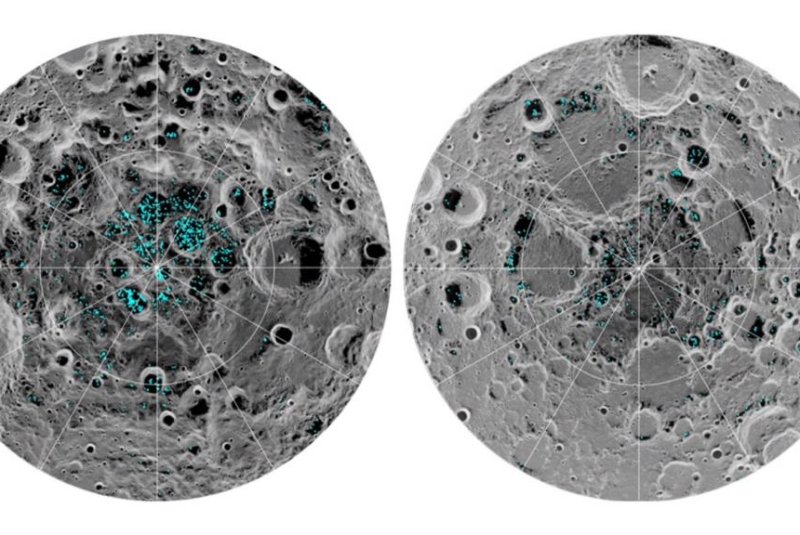NASA's Moon Mineralogy Mapper instrument confirmed the spectral signature of water ice on both of the moon's poles. Photo by NASA
Aug. 21 (UPI) -- Scientists have confirmed the presence of water ice on the surface of the moon's poles.
An international team of planetary scientists identified the geochemical signatures of ice among data collected by NASA's Moon Mineralogy Mapper, an instrument on the Chandrayaan-1 spacecraft. The probe was launched by the Indian Space Research Organization in 2008.
Different states of water molecules -- vapor, liquid or solid -- absorb and reflects different types and amounts of infrared light, producing unique spectral signatures.
Scientist were able to map the distribution of surface ice on the moon's two poles using data collected by the M3. On the south pole, most of the ice is concentrated in craters. The ice is more widely distributed, but sparser, on the north pole.
Some portions of the moon's poles can get surprisingly hot. Without an atmosphere to help regulate temperature, the lunar surface can quickly warm when exposed to the sun's rays. The presence of ice reveals the portions of the lunar poles protected from the sun.
"Most of the newfound water ice lies in the shadows of craters near the poles, where the warmest temperatures never reach above minus 250 degrees Fahrenheit," NASA explained in a news release. "Because of the very small tilt of the Moon's rotation axis, sunlight never reaches these regions."
Scientists have previously identified evidence of water ice on the moon's south pole, but researchers could not rule alternative explanations for their observations. The latest data -- published this week in the journal PNAS -- confirmed the presence of water ice on both poles.
Last year, scientists used Moon Mineralogy Mapper data to map the presence of water across the entirety of the lunar surface.















